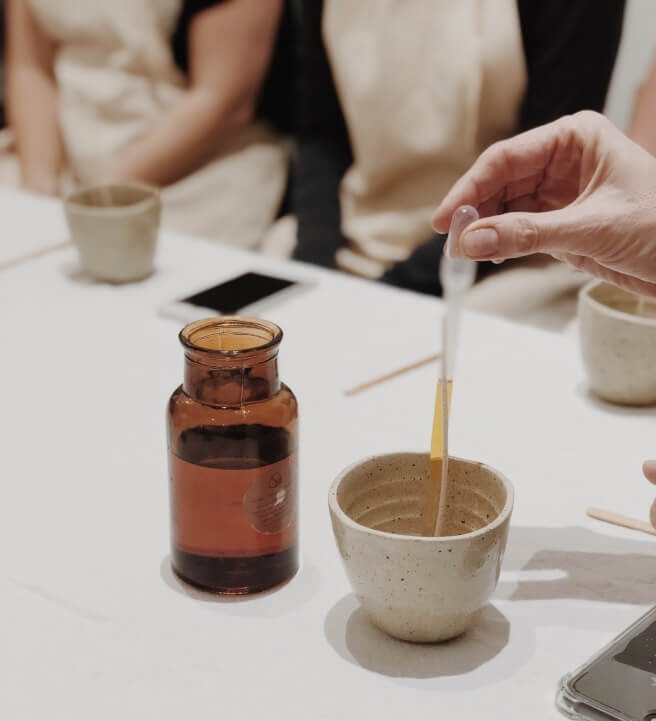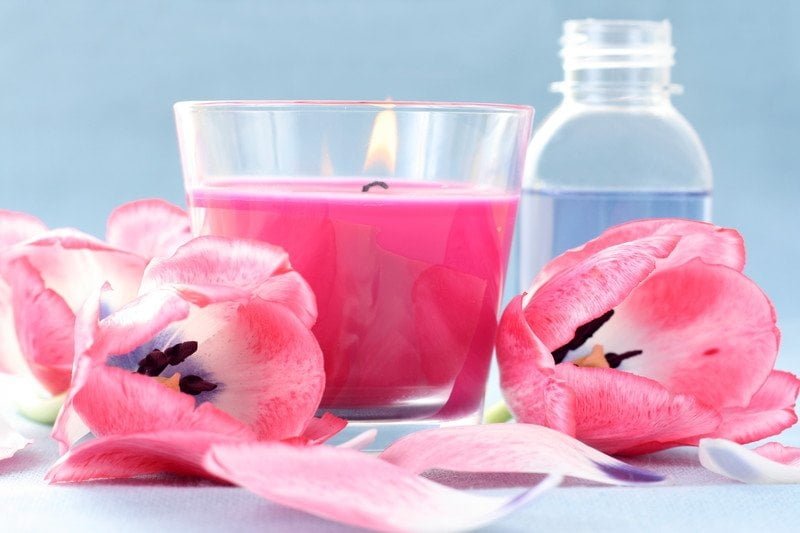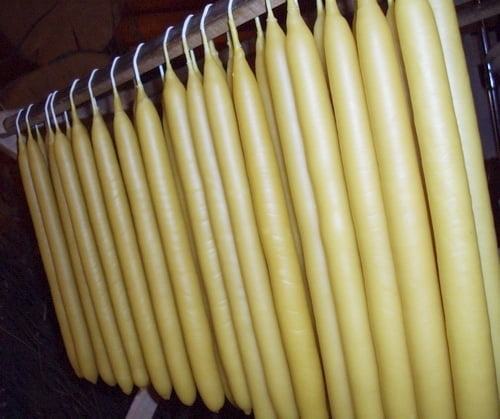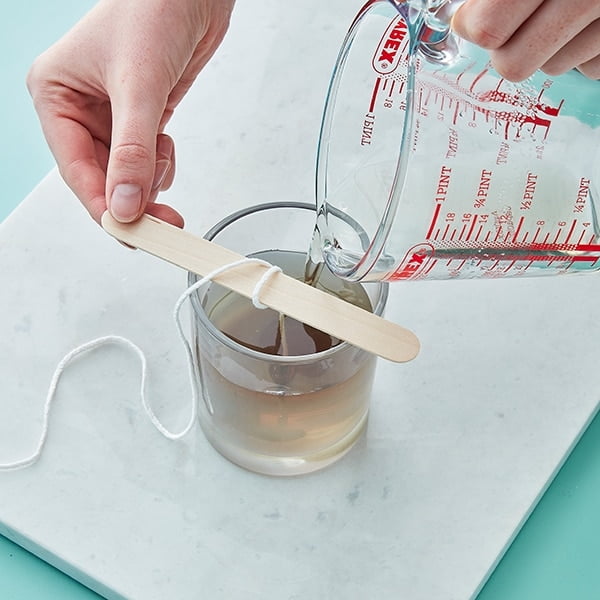Introduction
Candle making is a rewarding and creative hobby with many benefits. It can be both enjoyable and therapeutic as you explore scents, colors, and textures to create candles unique to your home or for gifting to others. Through candle making, you will discover the satisfaction of creating something beautiful out of basic elements. You can choose from a variety of scents, waxes and wicks to craft custom candles. Whether you’re looking to make simple container candles or intricate pillars, the possibilities are endless when it comes to design. Plus, you have complete control over what goes into your candle, so there’s no worry about hazardous materials like phthalates found in certain manufactured products. Start with a few basics, such as wax melts and containers, then build up your gear as you take on more complex projects. Candle making is an accessible craft that anyone can take part in. Whether you want to learn just for fun or eventually start selling your creations online or at craft fairs ” let this guide lead you through join the world of candle-making!
Candle Types
There is a vast array of different types of candles and each type can be used for different purposes. Candle making for beginners can be daunting and to make sure you create the perfect candle for you, it’s important to understand the key differences between each type of candle.
Paraffin wax candles are what many people are familiar with – these are made from petroleum-based wax processed by manufacturers into a solid form (like cubes). These candles often come in layers and consist of dyes, fragrances, or other additives to give them their colour or scent. Paraffin candles are easy to light, long burning, and they do not cause any smoke or mess. They are great for everyday use such as décor and general illumination purposes.
Soy wax candles are an all-natural alternative that uses oils extracted from soybeans rather than paraffin wax. Soy wax usually only come in solid coloured blocks but dyes and non-toxic fragrances can just as easily be added without compromising safety. Usually softer and easier to melt than paraffin candles, soy crates stronger scents which are longer lasting because of the lower melts temperature of the wax itself. In addition, soy candles don’t produce any soot when burned, making them more eco friendly than paraffin equivalent.
Beeswax Candles are another all-natural option that have been around for centuries and remain popular today! Beeswax has a naturally sweet smell that makes it ideal for aromatherapy uses – this type of candle is believed to bring positive energy into your home and can also help people with sleeping issues such as insomnia due to its natural calming effect when burned. Beeswax candles burn cleanly without emitting toxins like other types of wax which makes them much better for both humans and environment!
Supplies Needed
Creating beautiful, scented candles doesn’t require a huge investment in supplies. In fact, if you want to get started with candle making it costs very little up front. At the minimum you will need the following essential equipment and tools:
• Candle Wax: Wax is the basis of all candles so you’ll need to decide on which type of wax to use. Most beginners opt for soy wax, beeswax or paraffin as they are relatively easy to work with. You can buy wax flakes,granules or blocks depending on your preferences and needs.
• Wick: To hold the heat and allow the candle to burn properly, it needs a wick. There are different types of wick available – choosing one depends on the size and shape of your expected outcome. Pre-tabbed wicks come with metal tabs attached and are great for beginners.
• Candle Containers: Your container choice is only limited by your imagination, but consider starting off with glass containers as they are easy to clean when reusing them. Mason jars are popular too due to their variety of sizes available.
• Fragrance Oils: A candle without fragrance is like a cake without sugar; not quite right! Fragrance oils come in many varieties – think about scents that best suit your desired atmosphere, be it calming or invigorating; light or heady; sweet or spicy.
• Dye Chips: To give your candles a unique look you may want to add dye chips (sometimes called colour chips or flakes). These chips come in many colours but make sure that you choose dye chips that can handle high heat temperatures as some dyes will just break down rather than melt properly into thowax.
• Melting Pots/Containers: Having suitable melting pots will stop any mess while melting wax clumps and ensure that careful control over blending temperature can be maintained (as each type of wax requires specific melting temperatures). Double boiler Pots tend to work best as these pots allow you set an accurate temperature while not risking direct contact between flame and wax (which could cause damage).
Wax Types & Melting
Candle making requires you to use the right type of wax. The most commonly used waxes are paraffin, soy-wax, beeswax and stearin. Each wax has its own properties which allow various colors, fragrances and texture to be achieved in the finished product. Paraffin is the least expensive and most commonly used type of wax for beginners as it melts quickly and evenly, setting with a glossy finish. Soy-wax produces candles that burn longer than paraffin wax but can produce soft edges due to its lower melting point. Beeswax is naturally scented, making it ideal for aromatherapy candles, however since beeswax melt at a higher temperature than other types of wax; it can cause burning issues when not melted correctly. Lastly, stearin has a softer melting point but does require additives such as petroleum jelly or paraffin in order to ensure an even burn or wick integrity during production.
When selecting your wax type you should also consider what kind of safe melting technique you will use for candle making ” either traditional double boiler method or microwave technique. While both have advantages and disadvantages, the key factor to consider is safety ” never leave any sort of melting equipment unattended while in use! With regards to double boiling method: water needs to be added gradually while monitoring the temperature and adding additional water if necessary to regulate the heat; additionally sources such as open flames (fireplace) and unventilated areas should be avoided as this could increase level of smoke produced. Alternatively with the microwave technique you need to ensure that only container approved for microwaves by itself is used ” with sensors able detect heat levels ” and only short intervals should be used until desired results are achieved.
Basics of Candle Making
Candle making is a great hobby to get into and it can be a lot of fun. With the right knowledge and supplies, anyone can learn how to make beautiful and long-lasting candles. This guide will give you an overview of what you need to get started with candle making!
First, you’ll want to understand different candle types and materials. Scented or unscented, waxes like beeswax or paraffin, wick lengths and sizes – all these details go into making a quality candle. At the same time, read up on the safety measures for handling melted wax properly. Safety should always come first when working with fire.
Next, pick out some molds and containers for your candles in various shapes, sizes and styles that best suit your projects. Consider recyclable items like cans or jars for unique designs as well as professional options like rubber molds for an even finish. Be sure to invest in accessories such as thermometers, wick bars and melting pots if necessary.
Finally, now its time get creative! Experiment with different fragrances and color combinations so you’ll make a memorable product. Look up tutorials online or take a class near you if possible to learn different techniques on how to shape candles or using special tools. Start small at first, then explore bigger techniques that require more experience as you go along. It helps if you document your process along the way so you can look back at what worked best for future reference!
Step-by-Step Guide
Candle making for beginners can be simple and enjoyable when following the step-by-step instructions in this candle making tutorial. To make a basic candle, you will need the following materials: wax flakes or pellets, wick, thermometer, double boiler, pouring pitcher and fragrance oil or dye.
Before beginning your project, make sure to have plenty of space available and have protective gear such as heat-proof gloves. Then you can start your candle project by measuring out the wax and setting up your double boiler. Heat the wax over medium heat until it reaches approximately 190°F/ 88°C. Once reached, remove from heat and add fragrance oils or dyes at this temperature to preserve their potency ” stir continuously until combined thoroughly. Next slowly pour the melted wax into a pouring pitcher and prepare your wick by dipping it in melted wax so that it will stick =in place inside the container you are using for your final product. Then slowly pour the liquid wax into the vessel around your prepared wick ” ensure that any bubbles caused by over-stirring escape before pouring complete to prevent them from settling on top of finished product which may cause imperfections. Finally let cool for 24 hours before handling carefully.
Understanding how to melt down and use each type of wax is just as important as knowing how to create a successful candle with beautiful color payoffs when adding fragrances or dyes ” both must be compatible with other ingredients being used in a particular formula for desired results! Different techniques such as embedding items like starfish or pinecones can yield unique results too – these types of techniques require extra effort but nonetheless bring one-of-a-kind creations which many find worth while experiences in themselves! With patience and practice anyone is capable of producing special candles which can be used decorationally or given as personalized gifts with much love poured into each one!
Candle Making for Beginners PDF
An online PDF of Candle Making for Beginners can be an invaluable resource for getting started in the exciting world of candle making. Not only does it provide readers with step-by-step instructions, but it also offers helpful advice on materials, tools and safety procedures. An online PDF is also easily updated by its author to ensure readers get the most up-to-date information. Downloading the PDF allows readers to keep a copy on their devices to refer back to whenever they need it, meaning newbies do not have to search the internet or reread instructions every time they light their candle creations. It’s also especially useful if your device is unable to access unsecured networks or you are travelling and cannot access the internet. Furthermore, as some printed material can become outdated quickly, downloading a Candle Making for Beginners PDF ensures you always have access to all the latest tips, tricks and trends.
Common Mistakes & Troubleshooting Tips
One of the most common mistakes when making candles for the first time is not having the correct wax-to-wicking ratio. The wick needs to be sized correctly to get a good burn. If your wick is too small, it won’t create enough heat to melt all the wax around it and your candle won’t reach its full potential”it will have a hard time staying lit and will likely burn down unevenly. Ensure you choose an appropriate size of wick for your container size, before pouring your hot wax in. Additionally, avoid using too much dye as this can impact how quickly and evenly your candle burns.
Another mistake beginner candle makers make is not allowing the candle to cool and set properly before trimming their wicks. Not waiting long enough can result in air bubbles forming in the wax once it starts burning, which gives off less light and emits an error smoke that could stain walls or other surfaces in your home. To fix this, allow your newly poured candles ample time to cool down slowly ” avoiding sudden drops in temperature like placing them directly into a refrigerator ” so that they can solidify completely with no trapped air bubbles.
Lastly, beginners often forget to maintain their burners at least once a week or after 10-12 hours of continuous use” anything longer than will reduce their effectiveness and potentially damage them by buildup of old residue like wax and soot which could clog up pores and prevent airflow. Cleaning up any debris regularly (with cloth dipped in acetone or another suitable cleaning agent) is essential for proper burner maintenance and enables steady distribution of heat throughout your candle’s body while taking advantage of the full scent throw released this way!
Summing Up
When starting in the field of candle making, it is important to explore the many types of materials and tools available to help you reach your desired results. With careful research, trial and error, and patience, here are some tips on how to make the process of creating your own unique candles easier:
• Design your idea. Start by deciding on a design concept that best suits your vision. What type of wax will be used? What colors and shapes would give the desired effect?
• Gather materials. Make sure all supplies for making candles ” such as molds, wicks and wax ” are accessible so you can quickly start designing your candle creations.
• Follow a recipe. Consult an experienced professional on how to use a particular type of wax or determine what measurements should be used. Doing this will ensure a successful outcome from your project.
• Experiment with scent oils. Scents can greatly enhance the customer experience when burning candles, so it is important to include them in the mix if desired. Research for quality based products that work well together with the desired wax type being used to create good results at a reasonable price point.
• Test out different styles and designs. Take time to create several test pieces with various methods and techniques until you find something that works best for you. Conducting tests may turn out to be more costly in terms of resources; however it could potentially yield positive outcomes that would otherwise not have been discovered through only following recipes or instructions directly off the internet without breaking any rules along the way!
• Have fun! The artful designs made with candlemaking should be enjoyable! Focus on working with colors, textures, scents and shapes that brings joy as you journey into candle crafting projects – even if mistakes are made along the way – this learning process helps build skills needed for further successes down the road!

Welcome to my candle making blog! In this blog, I will be sharing my tips and tricks for making candles. I will also be sharing some of my favorite recipes.





